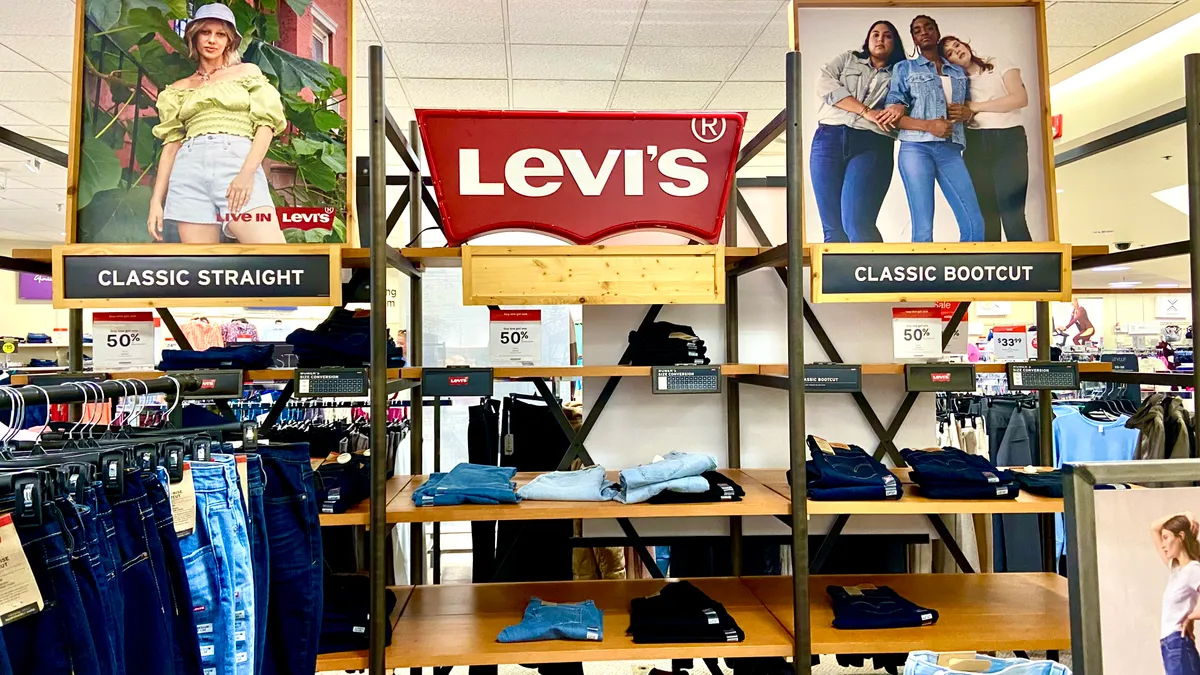Dive Brief:
-
Levi’s Q2 net revenues rose 7.8% year over year to $1.4 billion. Direct-to-consumer net revenue rose 8% and wholesale grew 7%, according to a company press release.
-
Gross margin expanded by 180 basis points to 60.5%, thanks mostly to lower product costs and favorable mix, offset in part by currency exchange rates. Total inventories were down 7%.
-
The denim brand swung into the black in the period, reaching net income of $18 million, from last year’s Q2 net loss of $2 million.
Dive Insight:
Levi’s remains comfortably perched as the globe’s most recognized denim brand among consumers of all ages, CEO Michelle Gass told analysts Wednesday. Sales of its classic 501 style remain strong, up 16% in the DTC channel in the second quarter, she said.
“We continue to drive brand heat and impactful storytelling by showing up at the center of culture across music, art and design, fashion and sports,” she said. “We were thrilled and honored to have Beyonce name a song after us on her newest album.”
That doesn’t mean the company is standing still. The brand sees growth in women’s, looser fits and non-denim apparel, Gass also said. Sales of “loose fits” rose 21%, and this summer the company is launching a women’s baggy fit and men’s relaxed fit in response to the demand.
Above all, though, the company sees growth in its shift to the DTC channel, both online and in stores. Gass noted that “this evolution will span multiple years,” but both she and Chief Financial and Growth Officer Harmit Singh emphasized the pivot and remarked on progress during the quarter.
In Q2, the DTC business notched its ninth straight quarter of “robust comp growth,” with the Levi's brand up 2% on an adjusted basis and the global Levi's women's DTC business up 22% growth in DTC in Q2, Gass said. In the second half of the year, the company will open a net of 70 new stores, ending the year with more than 2,600 globally, Singh said.
“Our DTC business continues to not only be our fastest-growing business, but is also seeing real improvements in profitability, with operating margins increasing more than 300 basis points during the quarter,” Singh also said. “This includes a significant improvement in e-commerce profitability, with EBIT margins now double digits on a fully allocated basis.”
The question remains whether this can be sustained, given the experience at Nike. Three years ago, executives there (and many analysts) similarly touted the potential for wider margins and higher profits as that brand prioritized DTC over wholesale. Last year, wholesale seemed to regain some importance to Nike’s strategy, and by this year Nike CEO John Donahoe said that, while the DTC emphasis had “driven growth and direct connections with consumers, it’s been clear that we need to make some important adjustments.”
For now, Levi’s DTC strategy remains in place, with some clouds on the horizon. The consumer shift away from denim “creates a lack of visibility from here,” for example, according to Wells Fargo analysts led by Ike Boruchow. And while Levi’s does remain the market leader, its global share has slipped, Boruchow said, citing Euromonitor data.














